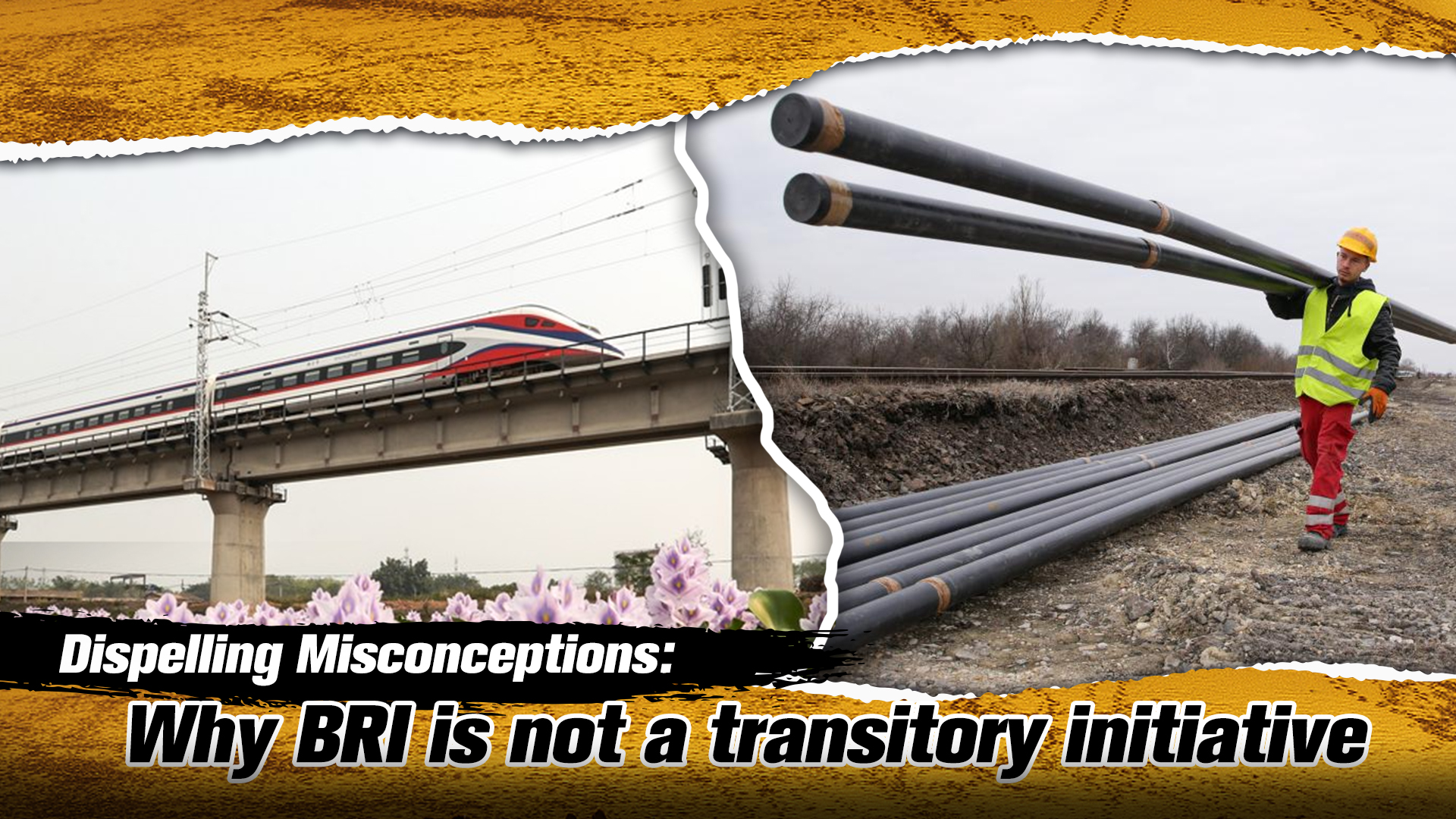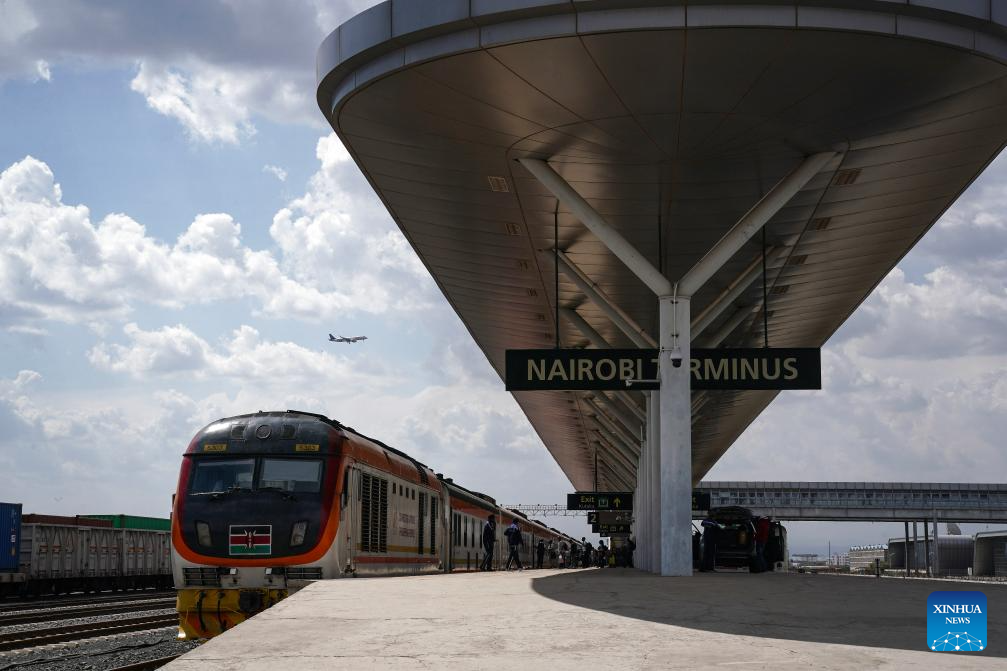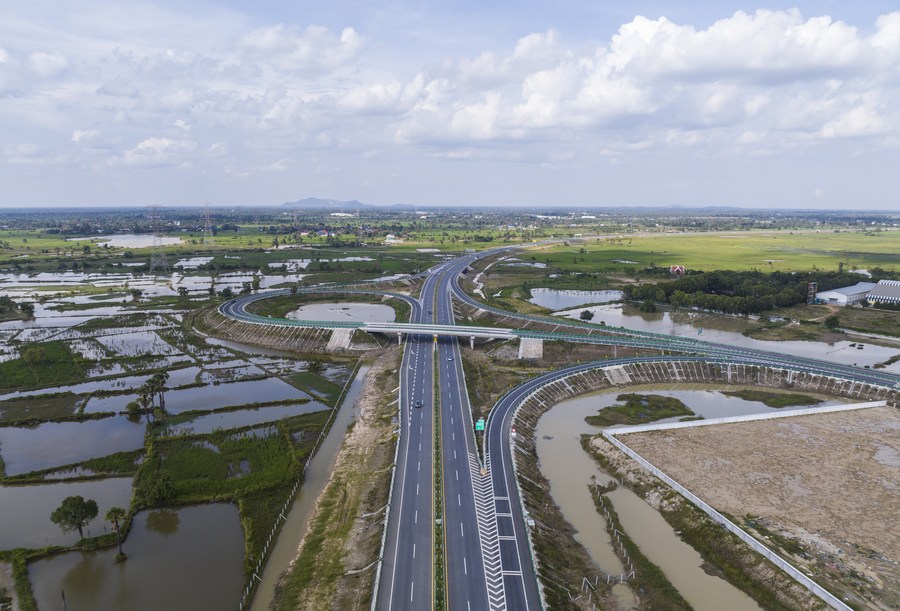
Editor's note: Since its proposal, some Westerners have never stopped discrediting the Belt and Road Initiative (BRI) in the past 10 years. Is the BRI predatory? Is it a geopolitical tool? Is the initiative a complete failure? Introduced at the BRI's 10th anniversary, Dispelling Misconceptions on BRI is an eight-part series debunking Western lies on the initiative. The eighth essay refutes the allegation of the BRI as a transitory initiative.
In 2013, China introduced a large network of infrastructure projects known as the Belt and Road Initiative (BRI) with the goal of establishing commercial connections between Asia, Europe, Africa, Oceania, and Latin America. This construction endeavor has drawn both support and opposition. The BRI has been subjected to a torrent of unfavorable narratives and rumors, particularly in the West. But it's critical to dispel these myths and illuminate the true significance of this long-lasting global development program.
One widespread misperception is that the BRI is only a transitory endeavor with few advantages. Critics argue that the BRI faces ongoing challenges and difficulties that seem never-ending or constantly shifting, such as poor planning, a lack of clear goals and objectives, as well as ineffective communication that has created a transitory atmosphere of confusion and inefficiency, among others.
Contrary to these misconceptions, the BRI has had a significant and long-lasting impact on the participating nations. Consider the Standard Gauge Railway (SGR) of Kenya's history. While some critics highlight the railway's drawbacks, including its financial strain and unfinished extensions, it's important to note that the passenger side of the SGR is fully booked and has reduced travel time between Nairobi and Mombasa, which used to take hours, to just a few hours.
Furthermore, Kenya is still dedicated to finishing the railway and is looking into financial sources. This determination to carry on indicates the BRI's long-term goals. The program's contribution to the improvement of African infrastructure is evidence of its dedication to fostering regional connectivity and socio-economic development.

A train leaving for Mombasa waiting at the Nairobi Terminus Station of the China-built Mombasa-Nairobi Standard Gauge Railway (SGR) in Nairobi, Kenya, September 20, 2023. /Xinhua
A train leaving for Mombasa waiting at the Nairobi Terminus Station of the China-built Mombasa-Nairobi Standard Gauge Railway (SGR) in Nairobi, Kenya, September 20, 2023. /Xinhua
Nevertheless, the BRI is fundamentally about more than just building infrastructure. It covers a wide range of topics, such as sustainable development, commerce, investments, policy coordination, and digital technologies. This extensive breadth represents a long-term strategy that aspires to boost economic growth, foster international cooperation, and heal regional gaps.
Comprehensive and evolving scope
The BRI's development over time shows how adaptable it is to shifting global demands and how relevant it continues to be. The project is built on a foundation of sustainability. One of the BRI's facets, the Green Silk Road, is committed to environmental responsibility and supports the UN's 2030 Agenda for sustainable development. This dedication to a sustainable future demonstrates the BRI's focus on the long-term advantages for the planet and its inhabitants.
It is untrue that the BRI will only be effective for a limited period because it has already had a substantial impact in regions like Asia and Africa. The BRI's investments in green infrastructure, such as supplying clean water to communities in Cambodia, Laos, and Myanmar, show how steadfastly committed it is to the preservation of the environment and the welfare of underprivileged groups.
On balance, the paradigm for international development in Africa and Asia has changed significantly as a result of the BRI. The initiative has placed a strong emphasis on mutual cooperation and win-win growth, in contrast to earlier methods that frequently maintained economic inequities.
The program has closed economic inequalities and enhanced the quality of life for people in participating nations rather than the exploitation of resources or labor. This change represents a genuine, long-lasting dedication to fairness and prosperity for all people.
Balancing criticism with reality
If the BRI's main goal was to increase infrastructure connectivity between Asia, Europe, and Africa, it has been successful in attaining this goal through supporting and sponsoring a wide range of initiatives, including ports, energy facilities, highways, and trains. Along with improving the infrastructure in the participating nations, these investments have boosted trade and investment prospects as well as economic growth.

Cambodia's Golden Port Expressway in Kampong Speu province, October 28, 2022. /Xinhua
Cambodia's Golden Port Expressway in Kampong Speu province, October 28, 2022. /Xinhua
It is crucial to recognize the economic advantages that the BRI has given to participating countries. Infrastructure deficiencies have been filled thanks to Chinese investments, promoting the expansion of the economy. Chinese initiatives have shortened bureaucratic procedures, offering effective substitutes for their frequently sluggish equivalents. China has assisted numerous nations in getting over infrastructural roadblocks so they may take part more fully in the global economy.
Chinese businesses and banks now have access to priceless international experience because of the BRI's emphasis on public-private partnerships and collaboration. These encounters have improved their skills and competitiveness on a worldwide scale. Additionally, the BRI has promoted technology transfer, talent enhancement, and knowledge exchange in partner nations, all of which can stimulate regional economic development and growth.
In large part, the BRI has been successful in promoting increased trade between participating countries. The growth of effective transportation networks has decreased logistical costs and restrictions, facilitating the flow of products and services across international boundaries. As a result, both China and the other participating countries have benefited from sustainable trade and increased economic interdependence.
Many of the nations involved in the BRI have seen tremendous economic growth as well. The BRI has boosted economic activity, helped create jobs, and reduced poverty in member countries by investing in infrastructure and fostering economic development. Additionally, it has given Chinese businesses access to new markets and business opportunities.
Beyond the headlines, China continues to show steadfast financial support for the BRI. In addition to funding from China's banks, the establishment of financial organizations like the Silk Road Fund and the Asian Infrastructure Investment Bank has maintained a consistent supply of funds to finance BRI's long-term projects. In order to ensure that the impactful initiative remains pertinent and responsive to the needs of the participating countries, China, both practically and politically, has been open to modifying programs to match their unique needs and goals.
The author Bobby Naderi is a London-based journalist, guest contributor in print, radio and television, and documentary filmmaker.
(If you want to contribute and have specific expertise, please contact us at opinions@cgtn.com. Follow @thouse_opinions on Twitter to discover the latest commentaries in the CGTN Opinion Section.)